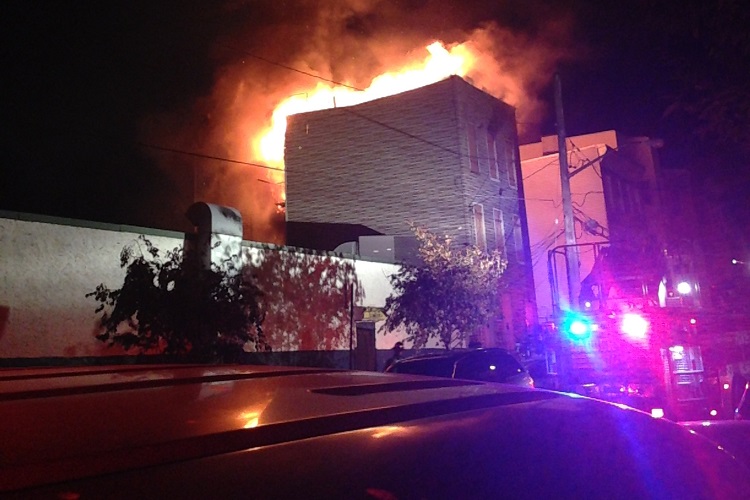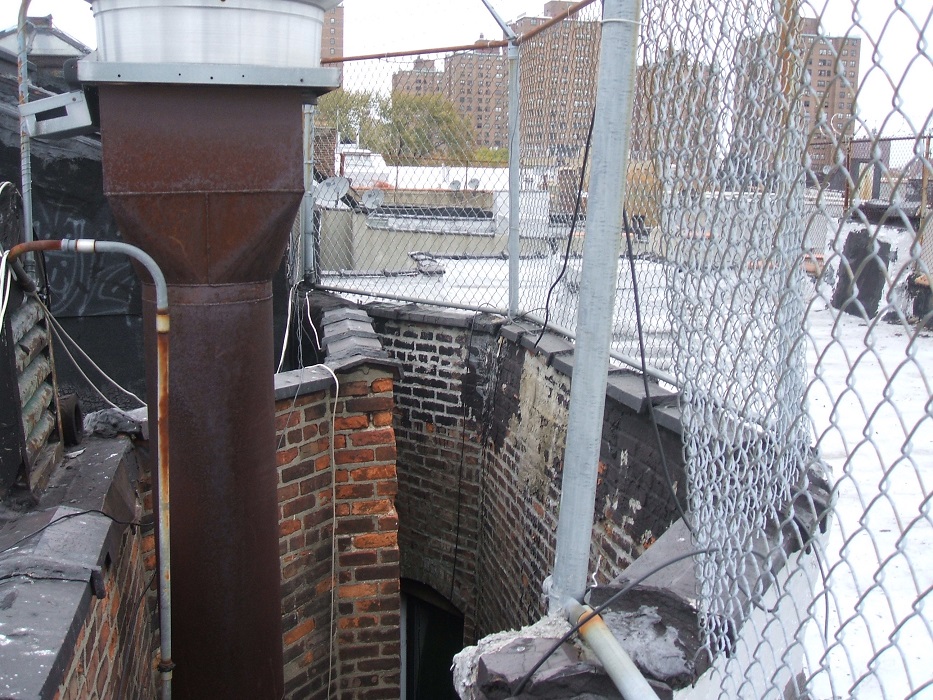
By Daniel P. Sheridan
When I entered the fire service in 1986, rapid intervention teams (RITs) did not exist. In the Fire Department of New York (FDNY), the RIT was known as the FAST (Firefighter Assist and Search Team) Truck. If there was an emergency where a firefighter was in trouble, it was the expected that the firefighters on scene would deal with it. The FDNY has five heavy rescue companies. Normally, the firefighters that were closest to the firefighter who was in trouble would deal with the situation. Sometimes, at the expense of the operation, firefighters would drop everything and head for the Mayday situation.
I remember the first time I encountered such a situation. We were assigned first-due for a reported working fire in a five-story tenement building. An officer was working that night in our truck company. We were delayed getting out of quarters and wound up second due. That night, the other truck company had two new firefighters on the inside team [consisting of an officer and two firefighters, a forcible entry (“Irons”) firefighter, and an extinguisher (“Can”) firefighter] with a very experienced officer. The firefighter assigned to the roof (photo 1) was a recent transfer into the company. He had previously been assigned to a truck company in lower Manhattan.

(1) Photos by author.
The fire building was dangerous—five stories with railroad flats and no rear fire escape (photo 2). By the time we arrived, the fire had complete possession of the third floor and had extended to the fourth. The roof firefighter from the other truck company used the adjoining building on the “Bravo” side to access the bulkhead. His officer was pushing him hard to “get the roof.” The roof firefighter became disorientated on the roof due to the extremely heavy smoke condition. Conditions were sobad that he had to don his self-contained breathing apparatus (SCBA).
(2)
Somehow, he managed to fall down a narrow shaft (photo 3). Although he was bleeding internally and blood was filling up in his lungs, he was able to get a transmission over the handie-talkie: “Mayday, Mayday, Mayday, I fell down the shaft.” I was near the windows in the rear searching the floor above when I heard the officer’s Mayday (at that time, interior team firefighters didn’t carry a handie-talkie). No one recognized his name; it was his first night with the company.

(3)
The fire had burned through the floor in the living room. I thought the engine firefighters that were with us on the floor above had fallen through the hole. On hearing the transmission, firefighters abandoned their assignments and went to rescue the downed firefighter. This firefighter survived because he landed on a huge pile of rubbish and his SCBA pushed against the wall to slow his decent.
Despite the fact that, at my department, firefighters have fallen through roofs, buildings have collapsed, and there were a few flashovers, this incident was just one of about seven to which I responded before my department had the FAST truck. The first time I was ever assigned to the FAST truck was as a lieutenant in late 1990s. I was assigned to a working fire as the third truck. When I reported to the incident command post (ICP), the chief told us to stand fast at the ICP. I had no idea what a FAST Truck was. The one thing I remember is that truck companies did not like being assigned FAST.
This all started when the Occupational Safety and Health Administration (OSHA) mandated that, when a fire progresses past the incipient stage and results in an immediately dangerous to life or health (IDLH) environment, firefighters shall use the “two-in/two-out” rule, which states the following:
When a fire progresses past the incipient stage, the fire area must be considered an IDLH atmosphere. Every member entering the IDLH atmosphere must be equipped with personal protective equipment and a self-contained breathing apparatus. No member shall enter, leave or operate in an IDLH atmosphere unless the member teams-up with at least one other member and remains within visual or voice contact with that member. Each member of the search team shall know the company identity and assigned position of the other members of the search team. Handie-talkies or other electronic communication devices are not acceptable to replace visual or voice contact. At least one of the members of the team within the IDLH must have a handie-talkie and must be able to contact a handie-talkie-equipped member of the Safety Team outside of the IDLH atmosphere.
At least two members must team up prior to entering an IDLH (Two-In) and there must be at least two other members outside the IDLH (Two-Out), who are designated as a Safety Team. The members of the Safety Team shall be available to assist the interior team(s) if the need arises. If a member leaves a contaminated area, another member using an SCBA must accompany this member to a safe area.1
Once the FAST truck arrives, the incident commander (IC) will dispense with the two-in/two-out rule and the FAST Truck will take over the responsibility for overseeing the safety of members operating. One word of caution: It is tempting to put the FAST truck to work, but ICs should do this only as a last resort. Truck companies assigned as the FAST truck will want to get involved in the operation, but they should avoid doing this. The FAST truck should “dress up” the building by removing window coverings, placing portable ladders, and doing anything else that may make the scene safer as long as it is within sight of the ICP. By no means should the FAST truck get involved with the operation.
The FAST truck should report to and stage near the ICP within verbal contact at a position from which they can be readily deployed (photo 4). A FAST unit member trained in using an electronic fireground accountability system (EFAS) (photo 5) must report to the on-scene battalion vehicle to monitor the EFAS and the FAST radio transmissions. However, the IC may assign the FAST unit to stage at a location other than the ICP based on the type of building units are operating, e.g., a high-rise office building. Units shall operate in accordance with established guidelines on FAST unit staging at different building types. At large-scale, high-rise, or unusual operations, the IC can position additional FAST units at other locations.2
(4)

(5)
At one response, we arrived at a parking lot where 17 trucks were fully involved. Surrounding the parking lot on three sides were commercial buildings that had three windows facing the lot. Fire was impinging on all three windows, all of which were failing rapidly. I needed a tower ladder immediately. The engine companies did an amazing job stretching four hoselines in minutes. We had a line in each of the exposures and one in the front. Diesel and propane tanks were exploding. The FAST truck was a tower ladder; I knew it was coming and made room in front of the buildings’ parking lot and ordered an additional tower ladder to the rear.
When the tower ladder arrived, I ordered it to the front with a supply line all set. The officer balked; he was quick to remind me that he represented the FAST truck crew. I told him to just go ahead and set up the bucket because we were on the verge of losing three commercial buildings. He complied and I grabbed the officer from the rescue crew and ordered them to assume the duties of the FAST truck until the special unit’s FAST truck arrived.
We in the FDNY are very fortunate to have an EFAS. The FAST truck will assign one firefighter to monitor the board during the duration of the incident and is not to leave that board for the entirety of the incident. The EFAS works off the handie-talkie radios. When a firefighter transmits a message, the identity of the firefighter populates the EFAS board. The handie-talkie also has an emergency alert button (photo 6) that, when depressed, sends out a five-watt tone to all and highlights the firefighter in red on the EFAS board.
(6)
Although I have not been in command of a Mayday incident, I have been involved in a few. The latest one involved a firefighter running low on air in a multiple dwelling. There was heavy clutter in the fire apartment. The engine was having difficulty getting to the main body of fire, causing the firefighters working inside to be on air longer than they had expected. Because of the heavy clutter and tight quarters, the interior team had difficulty exiting the apartment.
The forcible entry team exited, but when it made it to the public hallway, the officer realized that one of his firefighters was missing and transmitted the Mayday immediately. Had he waited and tried to take care matters into his own hands, it would have caused a delay. Because the Mayday was called so quickly after determination, the FAST unit was there in a matter of seconds and used the FAST Pak to find and augment the missing firefighter with air. (The Fast Pak is a portable air supply intended as an emergency air source for members when they are low or out of air while operating in an IDLH atmosphere. It is carried by all ladder, rescue, and squad companies.) All crews exited together safely.
Calling the Mayday as soon as possible is critical. Firefighters—myself included—are often reluctant to give the Mayday. As a captain, I was caught in a backdraft/smoke explosion on the top floor of a three-story wood frame building (photo 7). I dove down the stairs and, by the time I regained my composure, I realized that there were two other firefighters still in the building. I don’t know why I hesitated. I got on the handie-talkie and gave an incoherent transmission: “Engine 1 to Command Urgent, firefighters may be trapped.”

(7)
No sooner did I give that transmission when two other firefighters came flying down the stairs behind me. I have replayed that scenario over and over in my mind hundreds of times and I still can’t figure out why I passed that fire on the second floor (the fire was in the bathroom and there was heavy fire outside the window at top of stairs) and not call for the hoseline right then and there, how the explosion happened, and why I didn’t call the Mayday.
It is easy for everyone on scene to become complacent. We must be vigilant and take every precaution necessary to keep our fellow firefighters out of harm’s way; if they do get in trouble, be ready to help them.
References
- FDNY, Procedures Managing Members in Distress, Chapter 1, sections 1-3.
- FDNY, Procedures Managing Members in Distress, Chapter 2, sections 3.1, 3.2.
Daniel P. Sheridan is a 33-year veteran of and a battalion chief with the Fire Department of New York assigned to Battalion 3. He is a national instructor II and a member of the FDNY IMT. Sheridan is also a lead instructor with Mutual Aid Training Group.
MORE DANIEL P. SHERIDAN
First-Due Battalion Chief: Complacency
First-Due Battalion Chief: The Importance of Locating the Fire First

